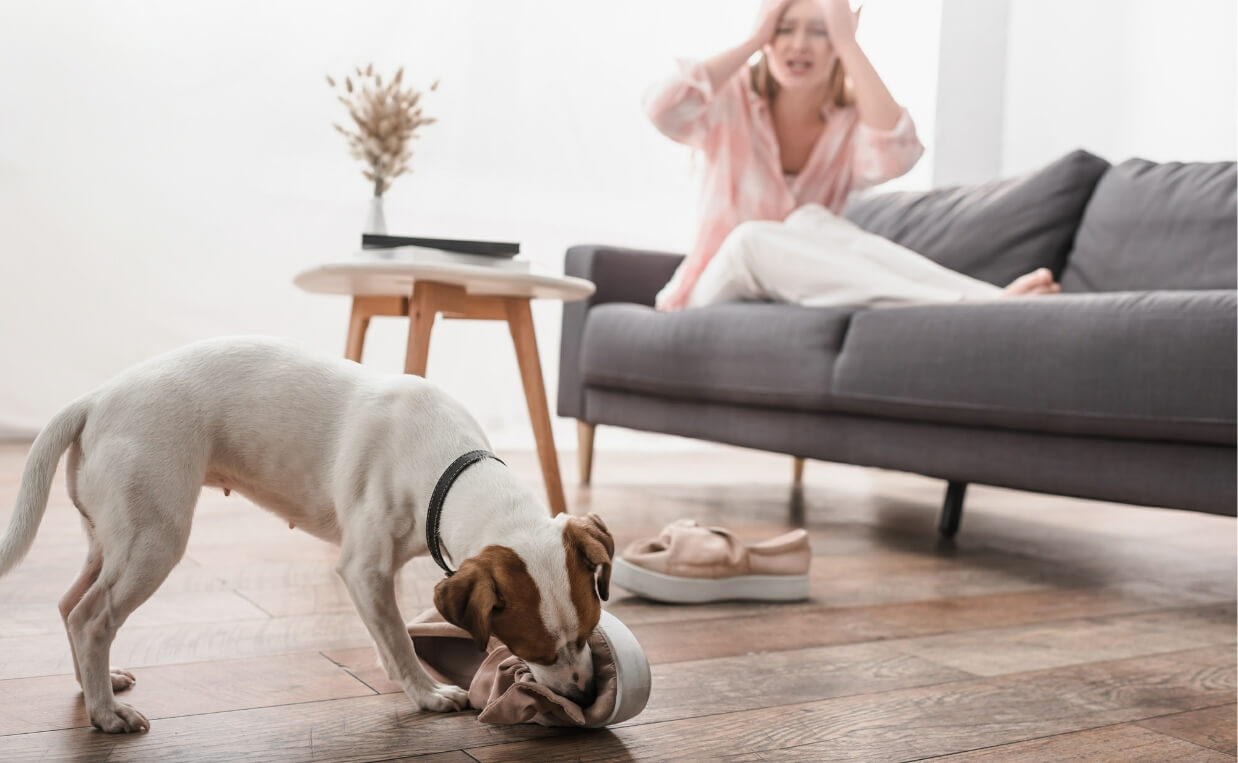
There’s no doubt about it – dogs like to chew items, especially when they’re still puppies. It’s normal for puppies and dogs to chew on things as they explore the world. For young dogs, it’s a way to relieve pain because they’re teething. For older dogs, it’s nature’s way of keeping jaws strong and teeth clean. Chewing also combats boredom and can relieve mild anxiety or frustration.
When it comes to puppies, chewing is a natural behavior and an important part of puppy development. But when chewing becomes destructive, you just can’t ignore it any more.
This kind of destructive chewing, besides being annoying, can be dangerous for your pup and expensive for you.
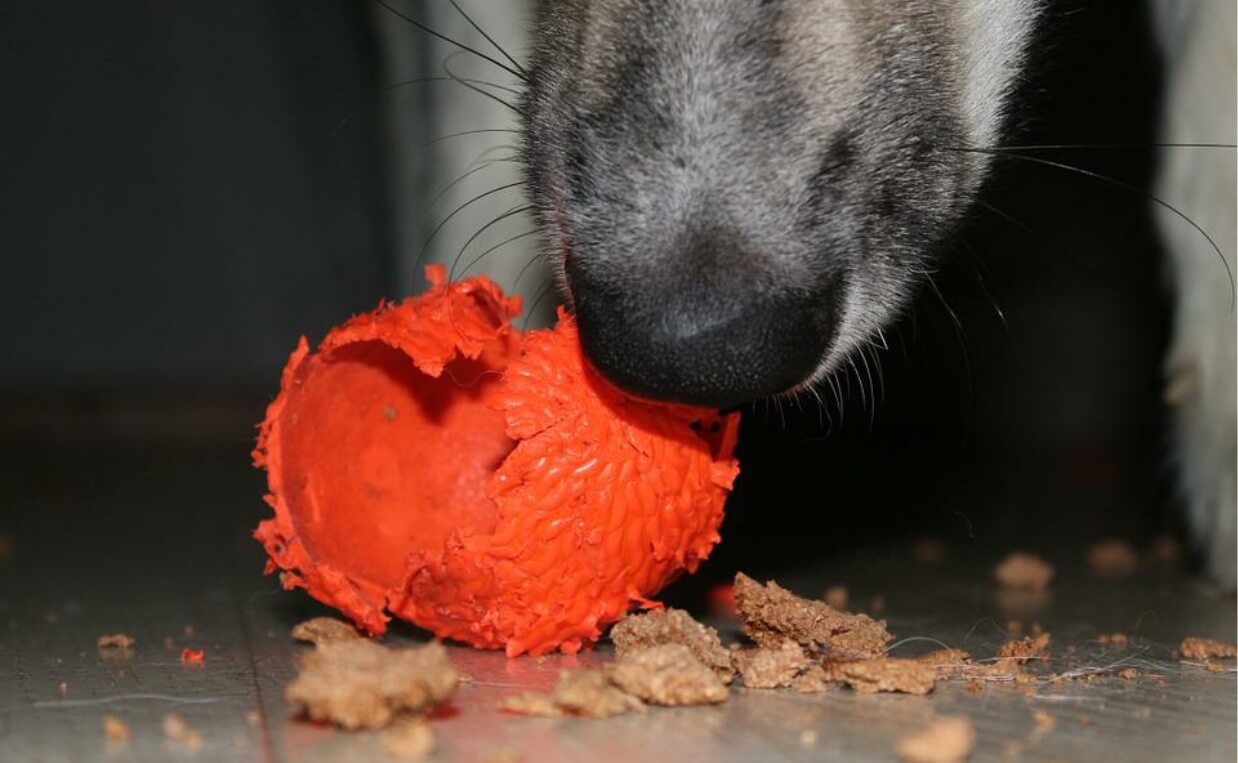
Why Dogs Engage in Destructive Chewing
So let’s explore why dogs chew and the best ways to handle destructive chewing.
-
Instinctive canine behavior
Dogs naturally need to chew. It’s instinctual for them and serves several important purposes.
- The ancestors of modern dogs needed to chew to break open bones for marrow or to access other parts of their meals
- Chewing helps clean a dog’s teeth
- Chewing is natural for puppies who are trying to soothe their aching gums when they’re teething
- Since dogs don’t have hands, they tend to explore the world with their mouths
It’s important to remember this when you catch your dog chewing. Remembering your dog needs to chew will help you stay patient when your dog or puppy chews on things you don’t want them to chew on.
If you catch your dog chewing inappropriate items like books, shoes, or the remote control, it’s because your dog doesn’t know a better way to get his or her needs met. Your role as a dog parent is to help your dog satisfy his or her instinctual need to chew in a safe and non-destructive manner.
-
Boredom
Dogs have a lot of down time and are often bored. If you’ve got a young or active dog, a daily walk isn’t going to cut it. If your dog likes to chew or destroy things when you’re gone or alone for a while, boredom might be the culprit. Dog daycare may be the perfect solution to prevent this type of destructive chewing.
Read more: Tips to Avoid Dog Boredom
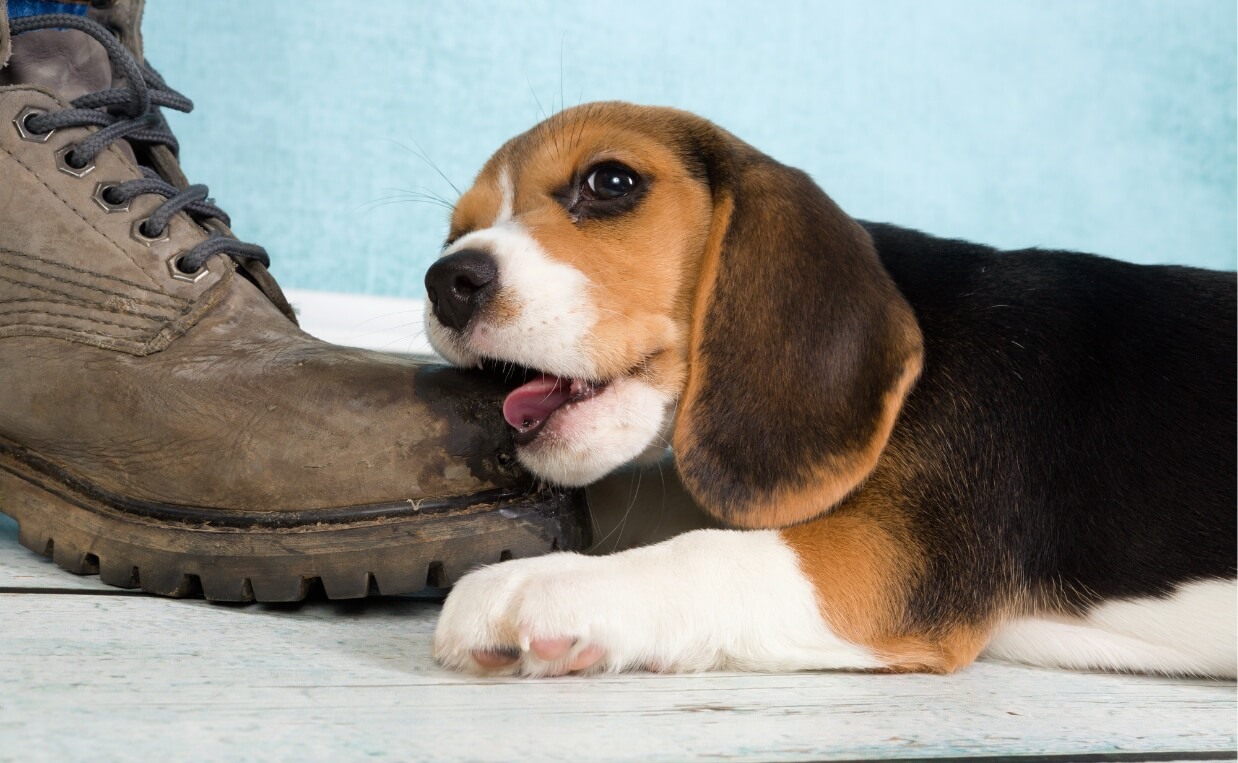
-
Anxiety
Anxious dogs sometimes try to soothe themselves by chewing. This might seem odd to us humans, but chewing can be similar to nervous fidgeting for dogs.
If your dog is likely to chew or destroy things when he or she is upset, anxiety may be the cause. You might even notice stressful events such as visitors coming over or thunderstorms trigger excessive chewing.
You can also watch your dog’s body language to see if he or she is showing signs of stress. If your dog seems anxious, unsettled, nervous, or upset, he or she may be chewing due to anxiety. If your dog seems relaxed, anxiety probably isn’t the cause for destructive chewing.
Read more: Signs Your Dog is Stressed and What To Do About It
-
Frustration
Sometimes dogs, especially puppies, really want something – like a toy, treats or playtime – and they may take their frustration out by chewing.
This kind of frustration-based chewing is pretty easy to recognize because your dog will be letting your know what they want, like eyeing the treat shelf or scratching to try to get to their favorite toy.
Usually frustrated dogs appear upset, and may even pace and work themselves up, but they won’t seem afraid or anxious like a dog who is stressed.
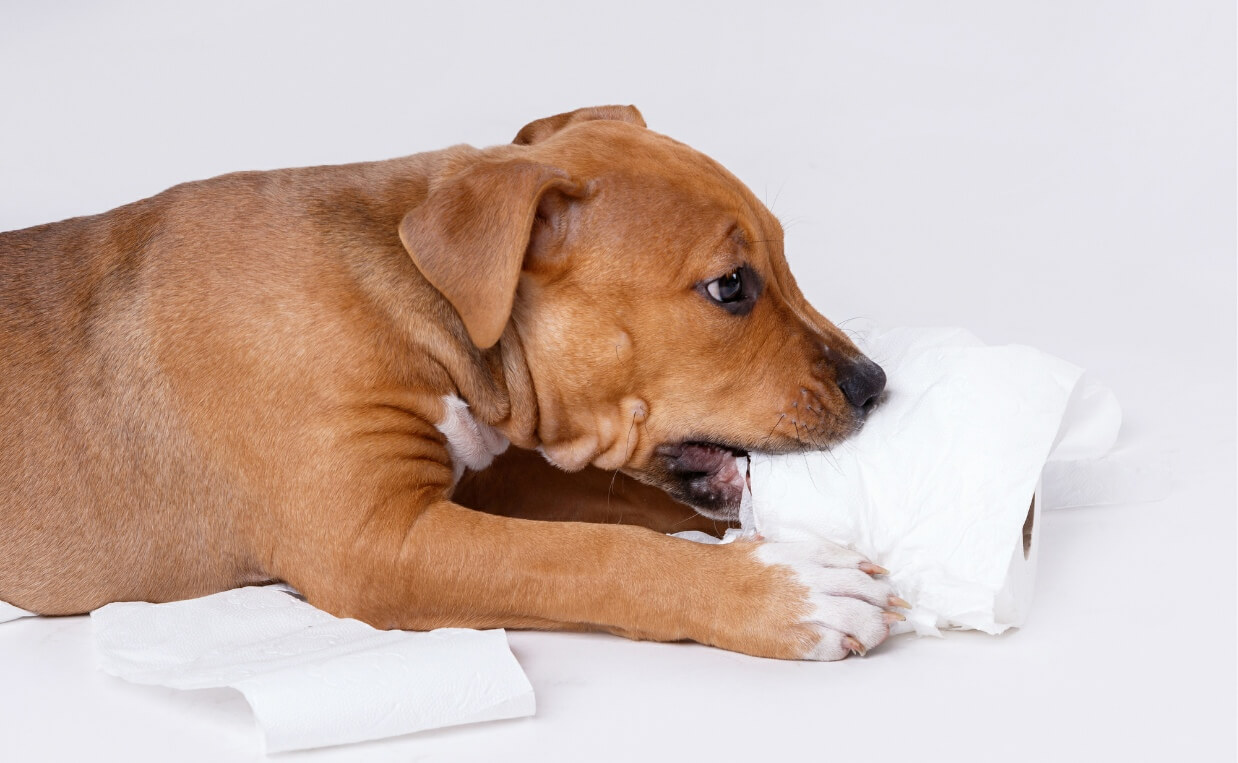
-
Separation anxiety
Some dogs become very stressed out when left alone. Destructive chewing is a common way dogs act out when experiencing separation anxiety. Dogs who panic when left alone generally direct their chewing toward exits of the home, like doors, blinds or the door of a crate.
Treating the root of your dog’s separation anxiety with an in-depth training plan is important. Simply putting your dog in a crate is not answer, because it doesn’t address the root of the issue.
Dog daycare can be an important resource for a dog suffering from separation anxiety, at least until the issue has been resolved.
-
Teething
Puppies, like babies, go through developmental phases of teething. As your puppy loses his or her puppy teeth, and is cutting new adult teeth, you will see a big increase in chewing as a way to relieve the pain and discomfort he or she is feeling.
For many dogs, this peak will be at about 4 to 6 months of age, but you’ll often see lots of chewing in puppies up until they are 18 months old.
You don’t want to try to stop this type of chewing because it’s a normal part of the growing up process, and your puppy is experiencing real pain. The best you can do is invest in some puppy teething rings you can place in your freezer and other toys designed to help your pup feel better while teething.
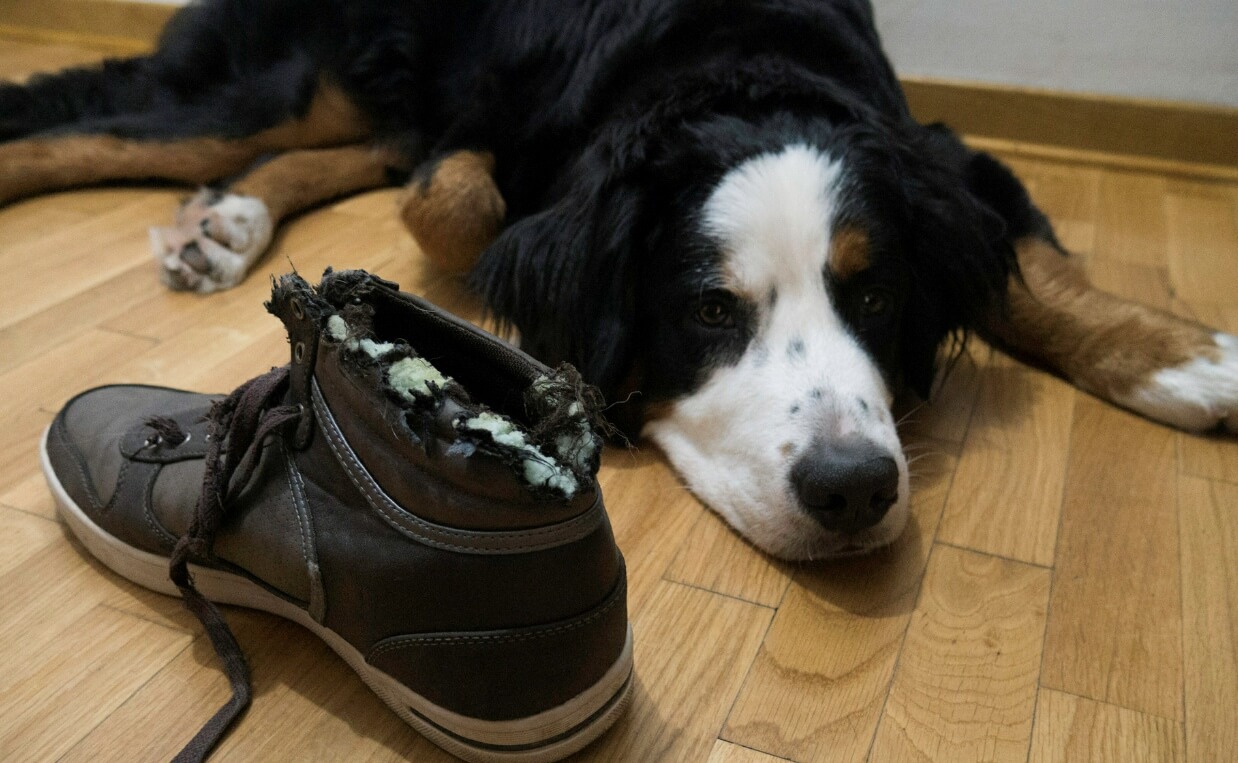
-
Hunger
Hungry dogs and puppies will try to relieve their hunger by chewing on items, especially leather-based, like shoes. Of course, some dogs just like the smell of dirty feet, so there’s that, too.
Make sure you are feeding your dog or puppy enough food and remember puppies, like children, go through growth spurts where they need more food. If you’re not sure how much you should be feeding your pup, be sure to check with your veterinarian, who can give you specific advice for your dog’s age, breed and energy level.
Helpful Strategies for Ending Destructive Chewing
Reducing your dog’s destructive chewing is usually pretty straightforward. The place to start, of course, is determining the underlying cause of the chewing.
-
Track chewing patterns
One helpful tip in noticing your dog’s chewing patterns is to keep track of the times of day your dog is most likely to chew. Jot down the time, what your dog was chewing on, and any thing going on at the time (i.e. thunderstorm). Noticing patterns goes a long way toward finding a solution.
-
Use redirection
If you catch your dog in the middle of destructive chews, do not yell, scold or punish your dog. Your dog doesn’t understand why you’re upset, and you can cause damage to your relationship if your dog becomes afraid of you. A better strategy is to redirect your dog to a chew item you want your dog to chew on.
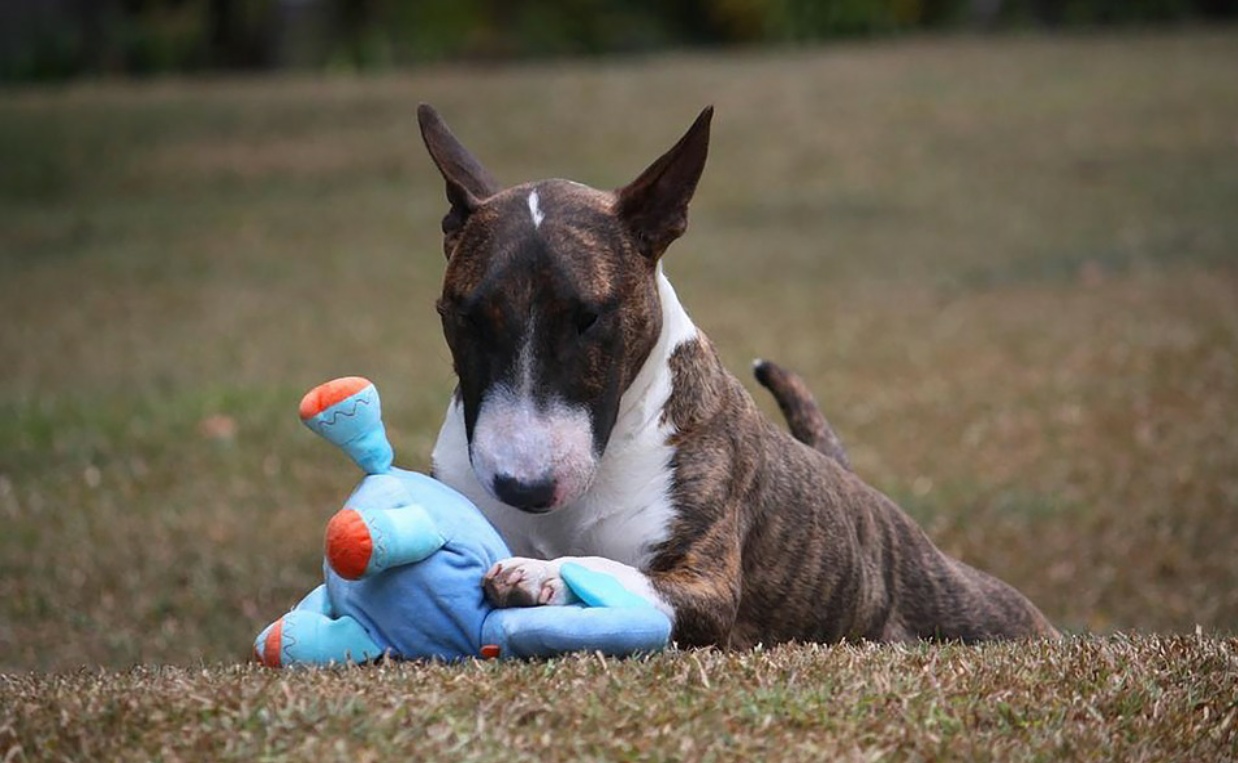
-
Provide more supervision
If your pup is getting into things he or she shouldn’t, part of the problem is a lack of supervision. Puppy-proof your home and use baby gates to keep your pup in an appropriate area. Learn more here: How to Puppy-Proof Your Home
-
Provide physical stimulation
Puppies, and high energy dogs, need lots of exercise and physical stimulation. There are many ways to give your dog enough exercise, including playing games and going for walks – runs – hikes.
Read more: 12 Ways to Help Your Dog Get Enough Exercise
-
Provide mental stimulation
Dogs need mental stimulation as much as they need physical activity. Over the last decade, many studies have demonstrated why mental stimulation is critical no matter the dog’s age. Mental stimulation will help alleviate boredom, reduce hyperactivity, lower aggression and stress, and prevent destructive behavior.
Read more: 18 Great Brain Exercises to Challenge Your Dog
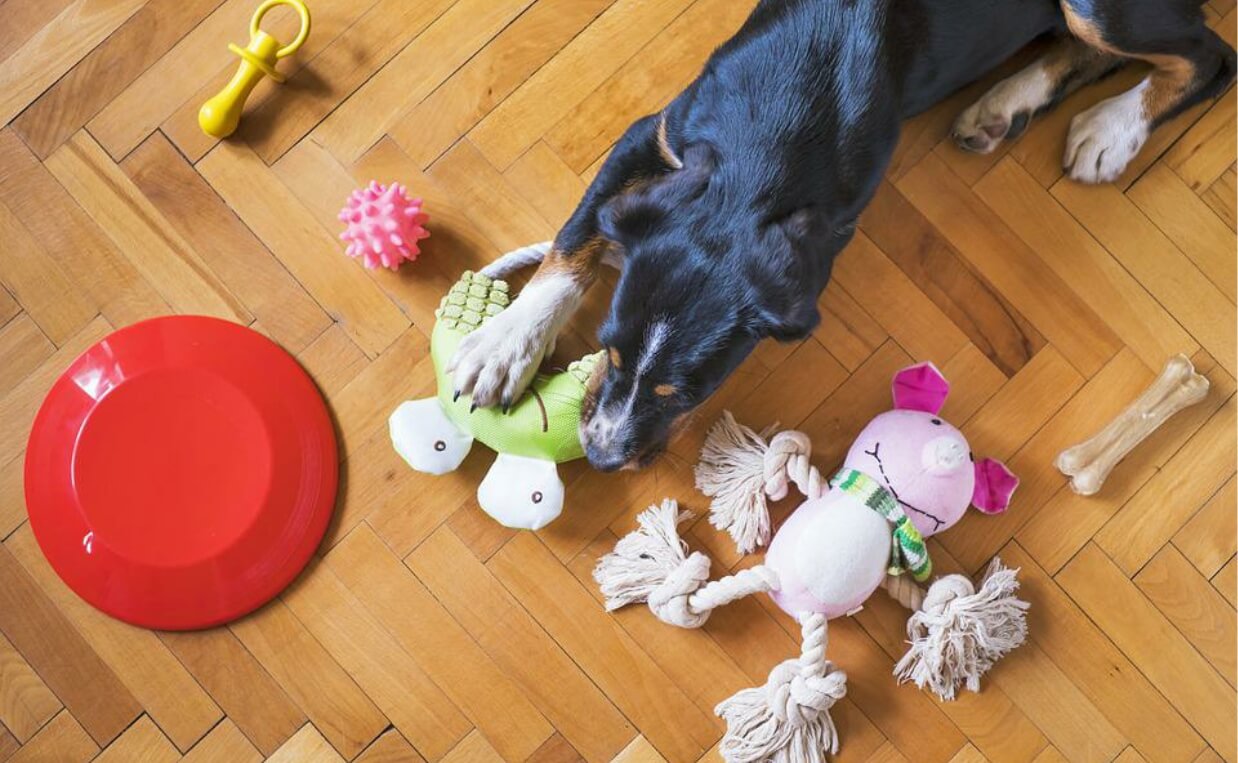
-
Give your dog safe things to chew
Giving your dog something safe and appropriate to chew will go a long way toward reducing destructive chewing. Remember your dog needs to chew! Be sure your choice in chewies is veterinarian-approved! Here’s a few to consider:
- Benebone Wishbone Durable Dog Chew Toy
- Xerath Dog Chew Toy
- Bully Sticks
- Salmon Skin Bone
- Greenies
- Kong Dog Goodie Bone Extreme
- Dog-safe veggies like carrots, broccoli stems, cucumbers or zucchini. Not all dogs will like this, but you might be surprised at how many do! Read more: The Ultimate Guide to Foods You Can and Can’t Feed Your Dog
Chew toys to avoid: nylon bones, deer antlers, rawhide. All of these are potentially dangerous for your pup.
-
Use deterrents if necessary
Sometimes your dog just can’t help themselves from chewing on certain things, such as furniture. In this case, you may want to consider a chewing-repellent spray like Bitter Apple. Just keep in mind some dogs don’t find Bitter Apple offensive, so you may have to try a few different brands to find one that will work.
-
Bring your dog to daycare
It’s been said earlier, but daycare is an excellent solution for destructive behaviors, including chewing. There are many benefits of daycare, including:
- Daycare is a great way for your dog to socialize with other dogs and humans. The more dogs are socialized, the more likely they will be well-adjusted.
- Daycare is a great tool to help your dog build his or her confidence because he or she understands how to interact with other dogs and people.
- Dog daycare is an excellent way for your dog to get exercise.
- Mental stimulation. Dogs benefit from the mental stimulation they get from daycare. There is always lots to watch and new smells to check out in daycare.
- Reduce separation anxiety. Daycare can help dogs who suffer from separation anxiety. It gives your dog a safe, supervised place to be when you aren’t home.
Learn more about Canine Campus Dog Daycare here
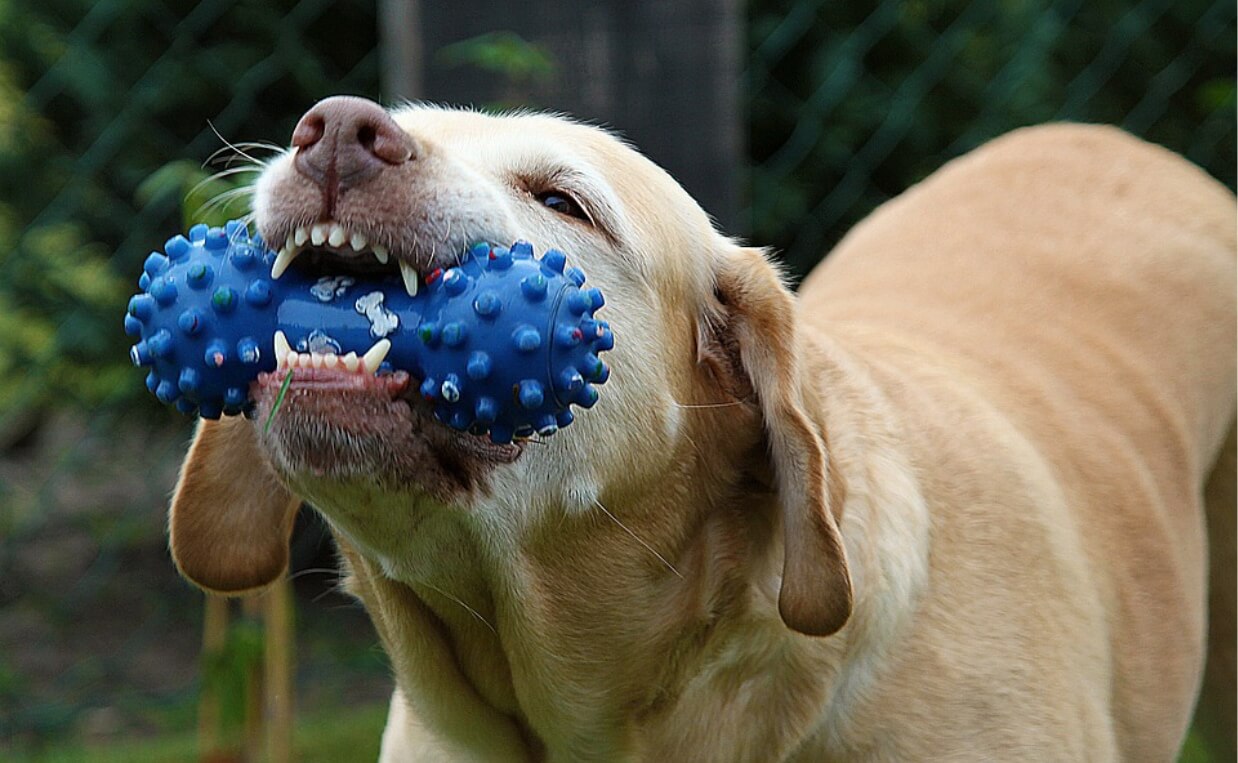
Final Thoughts
Remember chewing is a natural part of canine behavior. Chewing keeps your dog’s teeth clean, jaws strong, and brain engaged. Keep your dog safe from items he or she shouldn’t chew on and protect your belongings. Practice good supervision and puppy-proof your home while also making sure your dog has appropriate, safe items to chew on.
What is your dog’s favorite chew toy? What chew toys should be added to the list above? Please share your thoughts in the comments below…

 How to Introduce Your Dog to a New Baby
How to Introduce Your Dog to a New Baby Ways Your Dog Asks for Help: Understanding Canine Communication
Ways Your Dog Asks for Help: Understanding Canine Communication 18 Unique Nose Work Jobs Only Dogs Can Do
18 Unique Nose Work Jobs Only Dogs Can Do How Many Words Can Dogs Learn?
How Many Words Can Dogs Learn? 5 Ways Dogs Show Gratitude
5 Ways Dogs Show Gratitude






Leave a Reply